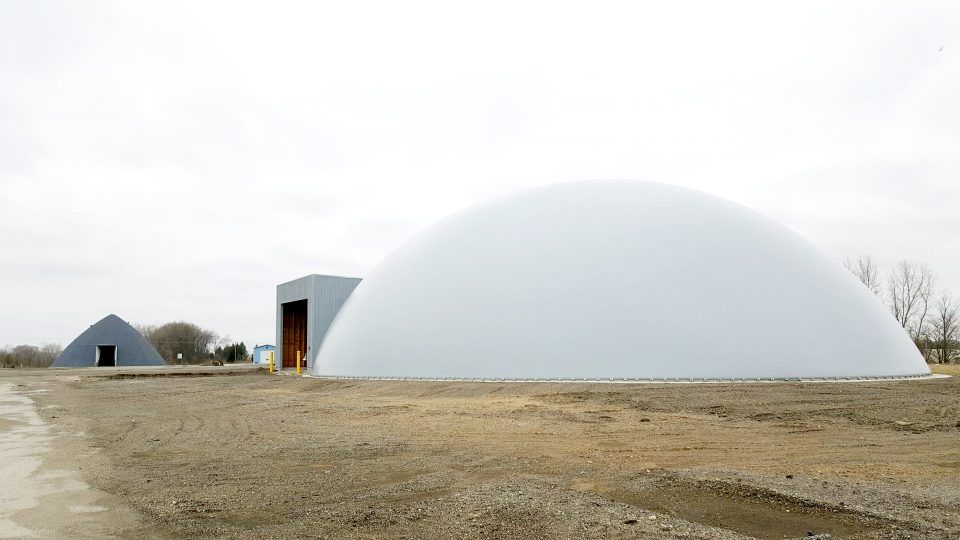A company that manages more than 150 miles of roadway in the Midwest utilizes eleven salt storage facilities, each holding the amount of salt needed for a season’s worth of winter weather on a specific stretch of highway. But just like salt breaks down ice, it also deteriorates wood, and in 2019, some of these existing wooden salt-storage domes were past their prime.
“When faced with replacing these domes, the choice to go with concrete structures was all about longevity,” said the company’s civil infrastructure manager. The leadership team was looking to reduce lifecycle maintenance costs; both its wooden salt domes and rectangular storage facilities with concrete walls and tarp roofs require regular upkeep.
Company management decided on steel-reinforced concrete domes from Dome Technology. “Looking at the numbers, it was more economical over the next 60 years going with domes, partly to reduce upkeep and partly because concrete domes would work well if automation like buckets or conveyors were added later,” the manager said.

Domes have an unlimited lifespan, which prevents teardown and minimizes material headed for the landfill. Measures designed to protect a dome’s structural integrity are essential to its longevity.
A dome can easily tolerate harsh weather, but the structure itself can also survive a disaster that other types of storage might not and will likely reward customers with insurance-premium savings. Should an earthquake, tsunami or tornado occur, the structure has a better chance of survival than a traditional building, and the stored product inside will not be introduced into the environment.